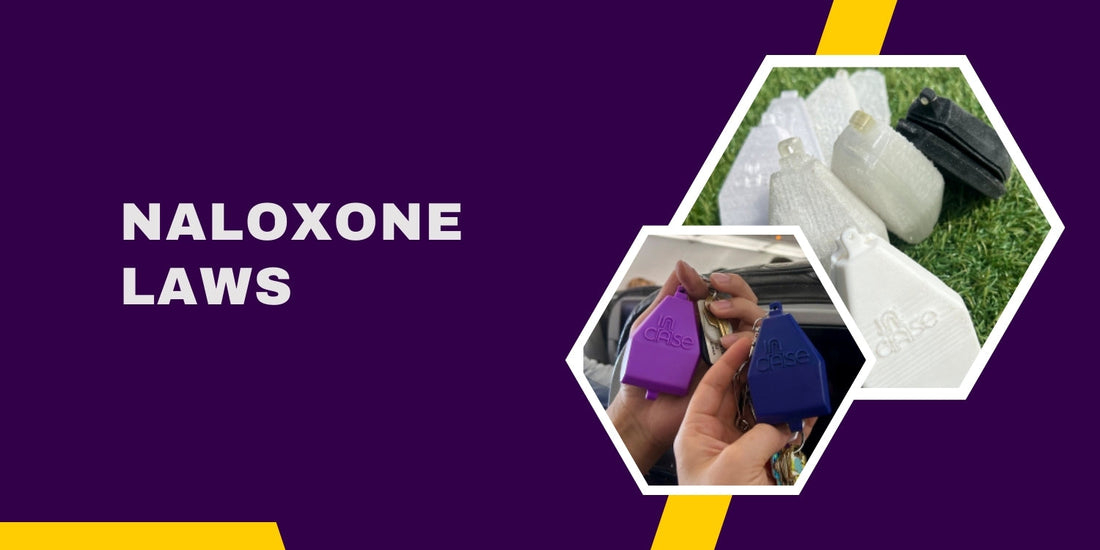
Naloxone Laws: Can You Legally Carry It in Your State?
Share
Naloxone Access Laws in the U.S.
Naloxone is a life-saving medication that reverses opioid overdoses, but legal access varies depending on the state. While many states have standing orders that allow pharmacies to distribute naloxone without a prescription, others still require one. Additionally, Good Samaritan laws exist in most states to protect individuals who administer naloxone in good faith from legal repercussions.
Understanding naloxone laws ensures that individuals, healthcare providers, and community organizations can legally and confidently carry and distribute this critical medication. Whether you're an individual looking to carry naloxone kit or a business considering placing public access Narcan cases in your establishment, knowing your state’s policies is essential.
Where to Find Legal Information
Because naloxone access laws vary by state, it is important to check official sources for up-to-date information. Some of the best resources include:
● Local pharmacy regulations – Many major pharmacies carry naloxone, and in most states, it can be obtained without a prescription. Pharmacists can provide guidance on local regulations.
● State health department websites – Most state public health departments have naloxone access information and resources for individuals and organizations.
● Harm reduction organizations – Many harm reduction groups provide free naloxone kits and information about legal protections and community distribution programs.
Checking these sources ensures that you have accurate, up-to-date information on naloxone availability in your area.
State-by-State Differences in Naloxone Access
While naloxone is widely available in the U.S., state laws differ in several ways:
1. Standing Orders and Pharmacy Access
Some states allow pharmacists to dispense naloxone without a prescription through a standing order issued by state health officials. This makes it easy for individuals to walk into a pharmacy and obtain naloxone just like any over-the-counter medication.
Other states require a prescription but may offer community distribution programs to increase availability. Individuals in these states can often obtain naloxone through public health agencies or harm reduction organizations.
2. Public Access Naloxone Programs
Several states have expanded their naloxone programs by placing indoor public access Narcan cases in locations where overdoses are more likely to occur. These include:
● Universities and colleges – Many campuses have installed naloxone stations, recognizing the increasing risks of fentanyl exposure.
● Airports and transit hubs – Given the rise in overdoses occurring in public restrooms, airports and train stations are adding naloxone cases alongside first-aid kits.
● Libraries, community centers, and workplaces – Public spaces are beginning to treat naloxone access as a standard emergency measure, similar to AEDs for cardiac arrests.
Expanding public naloxone availability helps bystanders act quickly in an emergency, saving lives before emergency responders arrive.
The Best Way to Carry Naloxone
Carrying naloxone every day ensures that it is available when needed. The best ways to keep naloxone safe and ready to use include using a naloxone keychain case or a carrying pouch, which keeps it protected while allowing for quick, discreet access..
Benefits of Proper Naloxone Storage
● Protection from physical damage – Prevents the nasal spray or vials from being crushed or punctured.
● Temperature regulation – Helps maintain naloxone’s potency by shielding it from excessive heat or cold.
● Convenience and accessibility – A well-designed case makes naloxone easy to carry in a bag, pocket, or vehicle without damage.
For public spaces, public access Narcan nasal spray cases ensure that naloxone is always available in high-traffic areas, just like fire extinguishers and first-aid kits.
How to Advocate for Better Access
If naloxone access in your community is limited, advocacy can help expand availability. Many states and local governments listen to public health advocates when deciding on harm reduction policies. Here are some ways to push for better naloxone access:
1. Contact Local Lawmakers
Encourage legislators to support Good Samaritan laws and naloxone distribution programs. Many states have expanded access due to public advocacy and community engagement.
2. Encourage Pharmacies to Stock Naloxone
Even in states where naloxone is available without a prescription, some pharmacies do not actively carry it. Asking local pharmacies to stock naloxone and educate staff on its use can increase availability.
3. Support Harm Reduction Organizations
Harm reduction groups play a major role in naloxone access by distributing free kits, providing education, and advocating for policy changes. Donating or volunteering can help expand their reach.
4. Promote Public Access Naloxone Cases
Encourage workplaces, schools, and businesses to install public naloxone stations just as they would first-aid kits or AEDs. Making naloxone easily available normalizes its presence and encourages more people to carry and use it when needed.
Final Thoughts: Ensuring Legal and Practical Naloxone Access
Understanding naloxone laws ensures that more people can legally carry and administer this life-saving medication without fear of legal consequences. While access laws vary, standing orders, Good Samaritan protections, and harm reduction programs have made naloxone easier to obtain than ever before.
Key Takeaways:
● Many states allow naloxone to be purchased without a prescription through standing orders at pharmacies.
● Good Samaritan laws protect those who administer naloxone in an emergency.
● Some states have public naloxone distribution programs and public access Narcan cases in community spaces.
● Carrying naloxone in a keychain case or insulated pouch ensures it is protected and ready for use.
● Advocacy efforts can help expand naloxone programs, public access stations, and legal protections.
By learning about naloxone laws and working to expand access, individuals and communities can take an active role in reducing opioid overdose deaths.
Check your state’s naloxone laws today and make sure you are carrying this essential medication legally and effectively.


